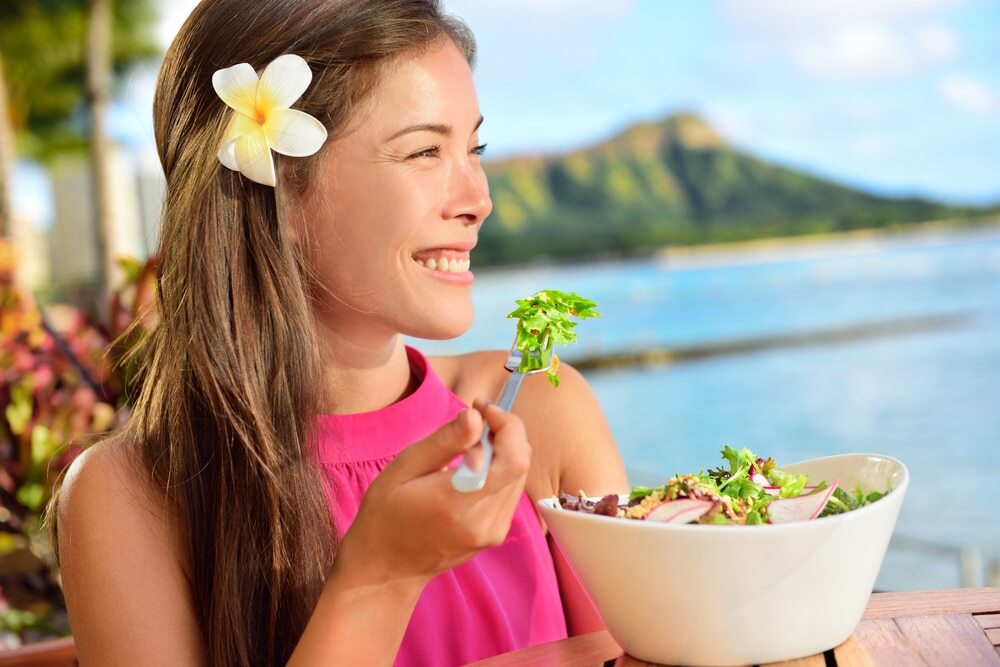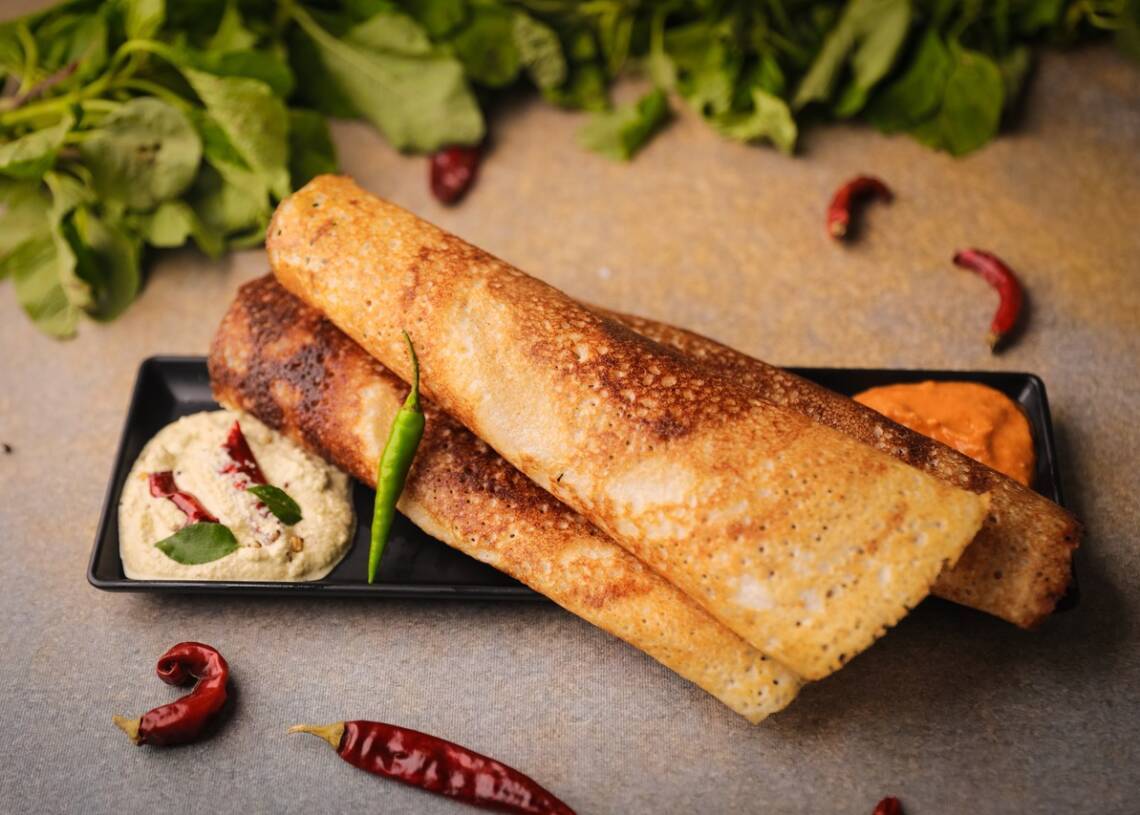Traveling offers exciting opportunities, but maintaining a healthy diet can sometimes feel like a challenge. This comprehensive guide provides practical strategies to navigate the culinary landscape of your journey while keeping your well-being at the forefront. From meticulous meal planning to understanding local markets, and from restaurant etiquette to managing specific dietary needs, we’ll explore every facet of healthy eating on the go.
This guide will help you embrace delicious and nutritious meals throughout your adventures, ensuring a fulfilling and healthy travel experience.
This guide will equip you with the knowledge and tools to enjoy diverse cuisines while staying true to your health goals. We will cover essential aspects like packing healthy snacks, selecting nutritious options at restaurants, utilizing local food sources, and maintaining healthy habits despite the rigors of travel. Whether you’re embarking on a weekend getaway or an extended vacation, the principles presented here can help you nourish your body and mind during your travels.
Planning Ahead for Healthy Travel

A crucial aspect of enjoying a trip without compromising your health goals is meticulous planning. Effective meal planning is paramount to ensuring you maintain a balanced diet and stay energized throughout your journey. This section details strategies for various types of trips, focusing on packing, dietary considerations, and researching local options.Effective meal planning is not just about what you eat, but also about how you prepare for the trip.
This involves considering the length and type of trip, dietary restrictions, and the local cuisine you anticipate encountering. Proper preparation can significantly enhance your travel experience and your overall well-being.
Meal Planning Strategies for Different Trip Types
Careful planning is essential for maintaining a healthy diet, regardless of the trip duration. Different trip types require tailored approaches to meal planning.
- Short Weekend Getaways: Focus on easily transportable, non-perishable snacks and quick, healthy meals. Pre-portioned containers of nuts, seeds, dried fruit, and granola bars are ideal. You can also prepare a simple salad or sandwich ahead of time and store them in reusable containers.
- Extended Vacations: Prioritize flexibility and variety. Pack a mix of non-perishable items and some easily perishable items, like yogurt or hard cheese. Plan for some restaurant meals, but have healthy options ready for other occasions. Consider purchasing some pre-portioned items like fruit, vegetables, or even ready-to-eat meals from local markets.
- Backpacking Trips: Focus on lightweight, high-energy snacks and meals. Dried fruits, nuts, energy bars, and instant noodles are excellent options. If possible, purchase pre-packaged snacks and meals from local markets.
Packing List for Healthy Snacks and Meals
A well-organized packing list is key to ensuring you have the right provisions. Differentiating between perishable and non-perishable items is crucial for maintaining food safety and quality.
- Non-perishable Items: These include energy bars, granola bars, nuts, seeds, dried fruit, canned beans, pasta, rice, and couscous. Choose options that are lightweight and won’t take up too much space.
- Perishable Items: Consider yogurt, hard cheese, fruit, vegetables, and pre-made salads or sandwiches. Ensure you have appropriate coolers or insulated bags for these items, especially for extended trips.
Sample Meal Plan for a 3-Day Trip to a Coastal City
This sample meal plan for a 3-day trip to a coastal city highlights balanced meals that accommodate travel.
- Day 1: Breakfast: Oatmeal with berries and nuts; Lunch: Pre-made salad with grilled chicken; Dinner: Grilled fish with roasted vegetables.
- Day 2: Breakfast: Yogurt with granola and fruit; Lunch: Sandwich with hummus and vegetables; Dinner: Seafood pasta from a local restaurant.
- Day 3: Breakfast: Smoothie with fruit and protein powder; Lunch: Leftover seafood pasta; Dinner: Sushi from a local market.
Dietary Restrictions and Allergies
Proper planning is crucial when considering dietary restrictions or allergies. This includes understanding the specific needs and carefully checking labels of packaged goods.
- Research: Thoroughly research local restaurants and markets to identify options that cater to your needs. Online reviews and recommendations from locals can be invaluable.
- Communication: Communicate your dietary needs clearly to restaurant staff, and double-check ingredients if you have any concerns. Be prepared to modify your meal plan if necessary.
Researching Local Restaurants and Markets
Researching local restaurants and markets is vital to discovering authentic and healthy food options.
- Online Reviews: Utilize online resources to gather reviews and recommendations for restaurants and markets.
- Local Guides: Seek recommendations from local guides, travel blogs, or even fellow travelers.
Pros and Cons of Packing Different Types of Meals
Different types of meals have their own advantages and disadvantages.
| Meal Type | Pros | Cons |
|---|---|---|
| Pre-made Salads | Convenient, customizable, and healthy | May need refrigeration, can become soggy |
| Sandwiches | Portable, filling, and easy to prepare | May require specific fillings to be healthy, can be messy |
| Dried Fruit | Lightweight, high-energy, and long-lasting | Can be high in sugar, may not be filling enough |
Navigating Restaurants and Food Outlets
Traveling often involves encountering diverse culinary experiences, but maintaining a healthy diet amidst unfamiliar options can be challenging. This section provides strategies for navigating restaurants and food outlets while prioritizing healthy choices. By understanding the nuances of ordering and selecting options, travelers can successfully enjoy their culinary adventures without compromising their well-being.
Strategies for Ordering Healthy Options
Selecting healthy options at restaurants necessitates proactive engagement with the menu and staff. Asking specific questions about ingredients and preparation methods empowers travelers to make informed choices. Inquiring about the source of ingredients, whether substitutions are available, and how dishes are prepared (e.g., grilled versus fried) can significantly impact the nutritional value of the meal. For example, a traveler could ask if a dish is prepared with olive oil instead of butter or if lean protein options are available.
Choosing Healthy Options from Fast-Food Menus
Fast-food restaurants present unique challenges for maintaining a healthy diet. However, healthy options are often available if one looks beyond the typical burger and fries. Salads, grilled chicken or fish sandwiches, and fruit-based beverages can be part of a balanced fast-food meal. Prioritizing smaller portions and avoiding excessive condiments and sauces can further contribute to a healthier choice.
For instance, opting for a salad with grilled chicken instead of a burger and fries offers a significantly healthier alternative.
Healthy Dishes from Various Cuisines
Numerous cuisines offer healthy and delicious options. Mediterranean cuisine emphasizes fresh vegetables, lean proteins, and healthy fats, with dishes like grilled fish with a side salad. Asian cuisine, rich in flavorful options, can feature dishes such as stir-fries with lean protein and plenty of vegetables, or a bowl of brown rice and tofu. Mexican cuisine, with its variety of fillings, allows for selecting grilled meats and plenty of vegetables over fried options.
Choosing dishes with a focus on whole grains, lean proteins, and fresh produce allows for a balanced and nutritious meal, regardless of the cuisine.
Finding Healthy Food Options in Unfamiliar Locations
Navigating unfamiliar culinary landscapes requires resourcefulness. Local markets and grocery stores often offer insights into fresh, healthy options. Exploring local markets and asking locals for recommendations can lead to hidden gems and unique, healthy food experiences. Travelers can also rely on reputable online resources, which often provide information about local restaurants and their healthy options. For example, websites dedicated to local cuisine or travel guides can highlight restaurants that offer healthy alternatives.
Avoiding Unhealthy Food Traps
Travelers should be aware of potential unhealthy food traps. Buffets and all-you-can-eat options can easily lead to overeating. Limit portions, choose wisely from available options, and prioritize healthy choices to maintain dietary control. Similarly, temptation can arise from indulgent desserts. Portion control and a conscious approach to dessert choices can mitigate this.
Travelers should avoid the temptation of heavily processed foods, opting for fresh ingredients and whole foods instead.
Healthy vs. Unhealthy Options (Example)
| Restaurant Menu Item | Healthy Option | Unhealthy Option | Explanation |
|---|---|---|---|
| Burger | Grilled Chicken Sandwich on Whole Wheat Bread with a side salad | Double Cheeseburger with Fries | Grilled chicken provides lean protein; whole wheat bread offers fiber; salad provides vitamins and minerals. Double cheeseburger is high in saturated fat and calories. |
| Pasta Dish | Pasta with marinara sauce, vegetables, and lean protein (e.g., grilled chicken) | Creamy pasta with meat sauce and a side of garlic bread | Vegetables provide nutrients; lean protein is a healthy source of protein; marinara sauce is lower in fat compared to creamy sauces. Creamy pasta with meat sauce and garlic bread is high in saturated fat and calories. |
| Pizza | Whole wheat pizza with vegetables and lean protein | Regular pizza with cheese and processed meats | Whole wheat crust provides fiber; vegetables and lean protein provide nutrients; regular pizza is often high in saturated fat and sodium. |
Utilizing Local Food Resources

Embracing local food resources is a fantastic way to enhance your travel experience while maintaining a healthy diet. Local markets and grocery stores offer an unparalleled opportunity to discover fresh, seasonal produce and other healthy options that are often unavailable in your home country. This approach allows you to sample authentic local flavors and support local farmers and producers.By purchasing directly from local sources, you can ensure the freshness and quality of your food.
This often translates to a higher nutritional value compared to processed or pre-packaged options found elsewhere. Moreover, it fosters a deeper connection with the local community and the environment.
Exploring Local Markets
Local markets are vibrant hubs of culinary discovery, brimming with fresh produce, artisanal goods, and often, unique regional specialties. These markets offer a wonderful opportunity to experience the local culture and connect with the community. Careful observation and a willingness to ask questions are key to uncovering the best selections.
- Finding Fresh Produce: Look for stalls displaying colorful, firm fruits and vegetables. Inquire about the ripeness and ideal preparation methods from the vendors. Seasonal produce tends to be the freshest and most flavorful. Ask about the origin of the ingredients, if possible.
- Discovering Healthy Options Beyond Produce: Many local markets feature a range of healthy options beyond fresh produce, such as cheeses, meats, and baked goods. Seek out options made with locally sourced ingredients. For example, a local bakery might offer whole-grain breads, or a butcher shop might display locally raised, grass-fed meats.
Healthy Local Snacks and Drinks
Sampling local snacks and drinks is a delightful part of any travel experience. Many local snacks are naturally healthy and offer a taste of the region’s culinary traditions.
- Fruits and Nuts: Fresh fruits are a common and healthy snack option in many regions. Consider local nuts, seeds, and dried fruits as well, which often offer a unique flavor profile and are packed with nutrients.
- Local Dairy and Yogurt: Many regions have a unique culture of dairy products. Fresh, local yogurt and cheeses can be a delightful and healthy snack. Look for options with minimal added sugar or processed ingredients.
- Herbal Teas and Infusions: A refreshing and healthy drink option. Local herbal teas and infusions are a fantastic way to stay hydrated and experience unique flavors.
Incorporating Local Ingredients
Local ingredients can be seamlessly integrated into your own meals. Simple substitutions can transform your meals into a delicious and nutritious experience, reflecting the flavors of the region.
- Adapting Recipes: Research local recipes or use available cookbooks to find inspiration. Many local recipes feature simple preparations that highlight the unique flavors of the ingredients.
- Creating Simple Dishes: A salad with local greens and vegetables, or a grilled fish with local herbs, are easy ways to incorporate local flavors into your meals. Be adventurous!
Supporting Local Farmers and Producers
Supporting local farmers and producers is essential for maintaining a sustainable food system and fostering economic growth in the region.
- Buying Directly: Buying directly from farmers or producers is an excellent way to support local agriculture. It ensures you receive fresh, high-quality products while reducing the environmental impact of transportation.
- Choosing Locally-Sourced Products: When possible, prioritize products that are sourced from local farms and producers. This choice often reduces your carbon footprint and supports local economies.
Nutritional Comparison
| Food Category | Local, Fresh Food | Processed Food |
|---|---|---|
| Fruits and Vegetables | High in vitamins, minerals, and antioxidants; lower in calories | Often lower in nutrients; higher in calories, added sugars, and preservatives |
| Grains | Often whole grains; rich in fiber | Often refined grains; lower in fiber |
| Protein Sources | Typically leaner, higher in protein; often more sustainable | May be higher in fat and sodium; often less sustainable |
| Dairy Products | Generally higher in nutrients; often from pasture-raised animals | Often lower in nutrients; processed and often from factory farming |
“Choosing local, fresh foods is a great way to experience a more sustainable and flavorful travel experience, while also supporting the local community.”
Maintaining Healthy Habits on the Go

Traveling can disrupt established routines, potentially impacting dietary and fitness goals. However, with careful planning and proactive strategies, maintaining healthy habits during travel is achievable. This section will Artikel essential steps to stay energized, hydrated, and well-adjusted to the changes in environment and schedule.
Importance of Hydration
Staying hydrated is crucial for overall well-being, particularly during travel. Dehydration can lead to fatigue, decreased cognitive function, and digestive issues. Different climates and activities can increase fluid loss. Carry a reusable water bottle and refill it throughout the day. Avoid sugary drinks and opt for water, herbal teas, or low-sodium sports drinks.
Consider the specific needs of your trip, for example, if you’re hiking in a hot climate, you may need to increase your water intake.
Incorporating Regular Exercise
Maintaining a regular exercise routine is essential for physical and mental well-being. Even limited time slots for exercise can significantly improve health. Explore local parks, gyms, or walking trails. Look for opportunities to incorporate activity into your travel itinerary. If your hotel has a fitness center, use it! Walking is an excellent low-impact option, and it’s easy to fit into a travel schedule.
Finding a travel buddy can also encourage participation in fitness activities.
Managing Stress and Fatigue
Travel can be stressful, leading to fatigue and impacting healthy choices. Prioritize adequate sleep, even if it means adjusting your sleep schedule gradually to accommodate time zone changes. Engage in relaxation techniques like deep breathing or meditation. Pack calming items such as aromatherapy products or a comfortable pillow. These small touches can create a sense of tranquility during travel.
Addressing Jet Lag
Jet lag, a common travel concern, can be mitigated by strategic planning. Gradually adjusting your sleep schedule in the days leading up to your flight can help. Expose yourself to natural light as soon as you arrive at your destination. A balanced diet and regular hydration are key components in managing jet lag symptoms. If symptoms persist, consult a doctor for advice.
For example, if traveling across multiple time zones, try to maintain a consistent sleep-wake cycle on the plane by setting a schedule and sticking to it.
Healthy Travel Snacks
Proper snacking can help maintain energy levels and prevent unhealthy food choices. Include nuts, seeds, fruits, and vegetables in your travel kit. Pre-portion snacks into small containers for easy access. Hard-boiled eggs, trail mix, and granola bars are great choices. Greek yogurt with fruit is another option, offering protein and nutrients.
Making Healthy Choices When Traveling with Others
Traveling with others presents both opportunities and challenges. Establish shared goals and support each other’s healthy choices. Explore healthy dining options together and encourage each other to stay active. If dining out, choose restaurants with healthy options. Discuss and compromise on dietary preferences.
For example, if traveling with family, plan healthy meals in advance. Pack snacks that everyone can enjoy.
Dietary Adjustments for Specific Activities
Maintaining a healthy diet while traveling becomes even more important when engaging in various activities. Different activities demand different energy levels and nutrient needs. Understanding these variations is crucial for optimizing performance and enjoyment during your travels. This section explores how to adjust your eating habits to accommodate various travel activities.Planning your meals and snacks strategically can significantly impact your experience and energy levels, whether you’re hiking through mountains or attending a concert.
This section delves into the nuances of dietary adjustments for specific activities, providing practical strategies and examples for a healthier and more enjoyable travel experience.
Healthy Eating Strategies for Hiking
Hiking requires sustained energy expenditure. Pre-trip planning is key to fueling your body for the journey. Prioritize complex carbohydrates for sustained energy release. Choose foods like whole-grain bread, brown rice, and quinoa. Include lean protein sources such as grilled chicken or fish for muscle repair and recovery.
Healthy fats, such as nuts and seeds, contribute to satiety and provide essential fatty acids.
Strategies for Healthy Eating During Strenuous Activities
When participating in strenuous activities, your body needs a greater intake of carbohydrates for energy. Choose readily available, easily digestible carbohydrates like fruits and whole-grain crackers. Hydration is paramount. Carry a reusable water bottle and sip water regularly, even when not feeling thirsty. Avoid sugary drinks as they can lead to energy crashes.
Snacks for Maintaining Energy Levels During Activities
Proper snacking is crucial for maintaining energy levels during physical activities. Select snacks that provide a balanced mix of carbohydrates, protein, and healthy fats.
- Energy bars (choose ones with whole grains and low sugar content)
- Trail mix (nuts, seeds, dried fruit)
- Fruit (apples, bananas, oranges)
- Whole-grain crackers with hummus or cheese
- Greek yogurt with berries
Staying Hydrated During Physical Activities While Traveling
Dehydration can significantly impact performance and well-being, especially during physical activities. Carry a reusable water bottle and sip water regularly, even when not feeling thirsty. Consider sports drinks if you’re engaging in intense activities for extended periods, but use them sparingly.
Healthy Food Choices for Different Activity Levels
Your dietary needs change depending on the intensity of your activities. For low-activity days, focus on a balanced diet with plenty of fruits, vegetables, lean protein, and whole grains. For higher-activity days, increase your carbohydrate intake to fuel your workouts.
Caloric Needs and Food Requirements for Various Activities While Traveling
The table below provides a general comparison of caloric needs and food requirements for different activities while traveling. Individual needs may vary based on factors like age, weight, and activity intensity.
| Activity | Caloric Needs (approximate) | Food Requirements |
|---|---|---|
| Sightseeing (low activity) | 1800-2200 calories | Balanced diet with fruits, vegetables, lean protein, and whole grains |
| Hiking (moderate activity) | 2500-3000 calories | Increased carbohydrate intake, lean protein, and healthy fats |
| Attending Events (light activity) | 2000-2500 calories | Balanced diet with a focus on portion control |
| Sporting Activities (high activity) | 3000-4000 calories | Higher carbohydrate intake, lean protein, and healthy fats. Hydration is crucial. |
Practical Tips for Healthy Food Choices

Maintaining a healthy diet while traveling requires careful planning and execution. Understanding how to efficiently prepare, store, and consume nutritious food is key to successful dietary management during your journey. This section provides practical strategies to ensure you can enjoy delicious and healthy meals, regardless of your location.Planning ahead, utilizing available resources, and practicing mindful portion control are essential elements in maintaining a healthy diet while traveling.
This involves considering food safety precautions, smart meal prepping techniques, and the use of portable equipment. Understanding how to adapt to various situations and make healthy choices is critical for both short-term and long-term trips.
Preparing and Storing Healthy Food Items
Proper preparation and storage of food are crucial for maintaining food safety and freshness during travel. Packing reusable containers and utilizing airtight bags will help maintain the quality and safety of your food items. Pre-portioning meals and snacks into individual containers beforehand minimizes waste and maximizes convenience.
Using Portable Appliances and Equipment
Portable appliances can be extremely useful for preparing meals on the go. Small electric kettles, portable electric cooktops, and compact food processors can make it easier to create healthy meals, especially when staying in accommodations with limited kitchen facilities. These tools are especially beneficial for preparing breakfast items like oatmeal, or quick lunches and snacks. Consider factors such as battery life and size when choosing portable appliances.
Meal Prepping for Travel Days
Meal prepping is a valuable strategy for ensuring healthy choices on the go. Packing nutritious meals and snacks ahead of time prevents impulsive or unhealthy food choices. Consider making overnight oats, prepping salads, or packing individual servings of fruits and vegetables. Proper packaging and storage are key to maintaining freshness.
Food Safety Concerns While Traveling
Food safety is paramount when traveling. Be cautious of street food and unfamiliar items. Prioritize eating at reputable establishments and thoroughly cook meats. Checking for safe food handling practices at your destination is important. Understanding local customs and food safety regulations can prevent foodborne illnesses.
Properly storing leftovers and avoiding raw foods when possible are critical.
Portion Control When Eating Out
Portion control is crucial when eating out. Share meals with others, request smaller portions, and choose dishes that are rich in vegetables and lean proteins. Prioritize healthier options when ordering from menus, focusing on fresh, unprocessed foods. By using these strategies, you can control the calorie intake and ensure that you are getting a balanced meal.
Healthy Ways to Use Leftovers
Leftovers can be a healthy and convenient way to reduce food waste and create new meals. Transform leftover roasted vegetables into a quick pasta dish or turn cooked grains into a filling salad. These methods can save time and money while also maintaining nutritional value.
Conclusive Thoughts

In conclusion, maintaining a healthy diet while traveling is achievable with careful planning and mindful choices. By understanding how to plan ahead, navigate restaurants, utilize local resources, and prioritize healthy habits, you can enjoy your travels without compromising your well-being. This guide provides a roadmap for healthy eating on the go, empowering you to savor every culinary experience while staying focused on your health goals.
Remember, healthy eating during travel is not about deprivation, but about making informed decisions and enjoying the journey with a healthy perspective.